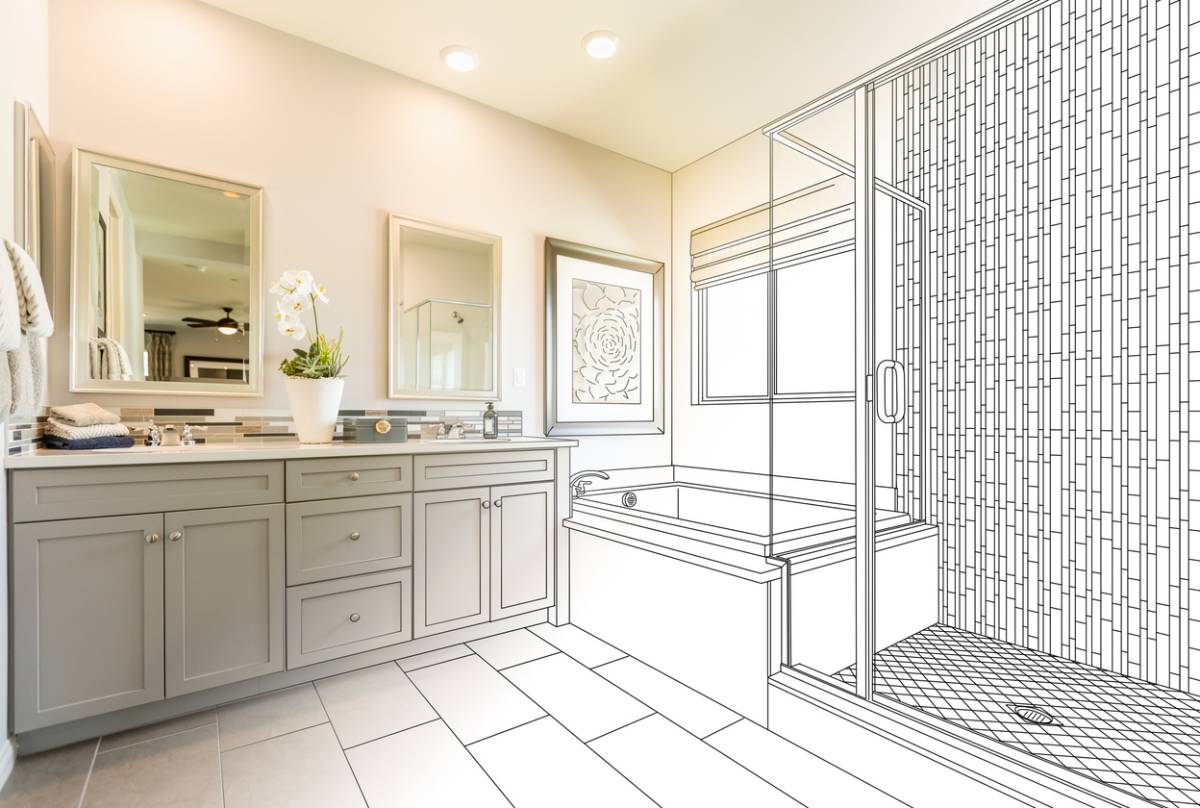A bathroom remodel can be an exciting project, but without careful planning, costs can quickly spiral out of control. Whether you are aiming for a complete overhaul or a simple refresh, you might be wondering how to budget for your bathroom renovation. Here is a step-by-step guide to help you budget effectively for your bathroom renovation.
How to Budget for Your Bathroom Renovation
1. Determine Your Renovation Goals
Before diving into budgeting, you must clearly define what you want to achieve with your bathroom renovation. Are you looking to modernize the space, improve functionality, increase energy efficiency, or boost your home’s resale value? Your goals will directly influence your budget. For example, luxury finishes and high-end fixtures will cost significantly more than basic upgrades.
2. Assess the Current Condition of Your Bathroom
Evaluate the current state of your bathroom to understand the scope of work required. Look for issues like outdated plumbing, water damage, mold, or electrical problems. Identifying these early on helps you allocate funds for necessary repairs, which can be more concerning if discovered later in the project.
3. Create a Detailed Budget Plan
Break down your budget into specific categories to manage expenses effectively:
- Labor Costs: Typically, labor accounts for 40-60% of your total budget. Hiring licensed professionals for plumbing, electrical work, tiling, and carpentry ensures quality and compliance with building codes.
- Materials: This includes tiles, fixtures, vanities, countertops, lighting, and paint. The cost can vary widely based on the materials’ quality and brand.
- Permits and Fees: Depending on your location and the scope of work, you may need permits for plumbing, electrical, or structural changes. Check with your local municipality for specific requirements.
- Design Fees: If you hire an interior designer, factor in their fees, which could be hourly or a percentage of the project cost.
- Contingency Fund: Set aside 10-20% of your budget for unexpected expenses, such as hidden water damage or structural issues.
4. Prioritize Your Spending
Identify which elements are most important to you and allocate your budget accordingly. Splurge on high-impact features like a luxurious shower or a statement vanity, and save on items that can be updated later, like hardware or decorative accessories.
5. Get Multiple Quotes
Obtain at least three quotes from reputable contractors to compare pricing and services. Ensure each quote includes a detailed breakdown of costs, timelines, and materials. Detailed quotes will help you make an informed decision and avoid unexpected expenses.
6. Consider Cost-Saving Strategies
- DIY Where Possible: Tackling simple tasks like painting, installing towel racks, or assembling flat-pack furniture can save on labor costs.
- Refurbish Instead of Replacing: Reglazing a bathtub, repainting cabinets, or updating hardware can give your bathroom a fresh look without the expense of new installations.
- Shop Smart: Look for sales, discounts, and clearance items. Consider outlet stores or online marketplaces for quality fixtures at reduced prices.
- Standard Sizes: Custom materials and fixtures are more expensive. Using standard-sized products reduces costs significantly.
7. Plan for Long-Term Value
Invest in quality materials and energy-efficient fixtures that offer long-term savings on utility bills and maintenance. While the upfront cost may be higher, these choices can pay off over time.
8. Monitor Your Budget Closely
Keep track of all expenses throughout the renovation. Use budgeting apps or spreadsheets to compare actual costs against your plan. Regularly reviewing your budget helps you stay on track and make adjustments as needed.
9. Be Prepared for the Unexpected
Renovations often uncover surprises, especially in older homes. Having a contingency fund and flexible timeline helps you manage these challenges without derailing your project.
10. Evaluate Financing Options
If your renovation exceeds your available funds, consider financing options such as:
- Home Equity Loans: Offers lower interest rates but requires using your home as collateral.
- Personal Loans: Unsecured loans with higher interest rates but faster approval.
- Credit Cards: Suitable for smaller expenses, but watch out for high interest rates.
- Renovation Loans: Specialized loans designed for home improvement projects.
Home Remodeling Contractors
Budgeting for a bathroom renovation involves careful planning, research, and flexibility. By defining your goals, assessing the current condition of your bathroom, and creating a detailed budget, you can achieve your dream bathroom without financial strain. Prioritize your spending, explore cost-saving strategies, and be prepared for unexpected expenses to ensure a successful renovation. Remember, a well-planned budget not only keeps your finances in check but also enhances the overall quality and value of your home. If you need assistance navigating any aspect of your home remodel, contact our home remodeling company to talk to our expert team.


